The historic monument of the capital, Opéra Garnier is one of the high places of French culture. A must
to visit the time of a stay in Paris!
He tells a part of the history of Paris. Artistic view of the capital with Haussmannian features, the Opéra Garnier or Palais Garnier symbolizes theatrical scene and luxury to Paris. Signature of a spectacular project conceived and realized by the creator whose name he bears, he is part of these high French cultural places to popularity that does not tarnish. A charism and a prestance that resonates beyond the boards... Behind its walls with splendid architecture, the Opéra Garnier has held a prominent role in the 7th French art as in “The Ghost of the Opera” or “La Grande Vadrouille”.
Today classified as a historic monument, there is still a must-see for tourists from all over the world and an address for enthusiasts of lyrical and choreographic performances. So what to do and what to see at the Palais Garnier in Paris? How can we access it and what are its entry rates? Discover everything you need to know to visit the Opera Garnier in Paris, a historic monument of the City of Light.
Also read: The 20 things to do in Paris
History of the Opéra Garnier
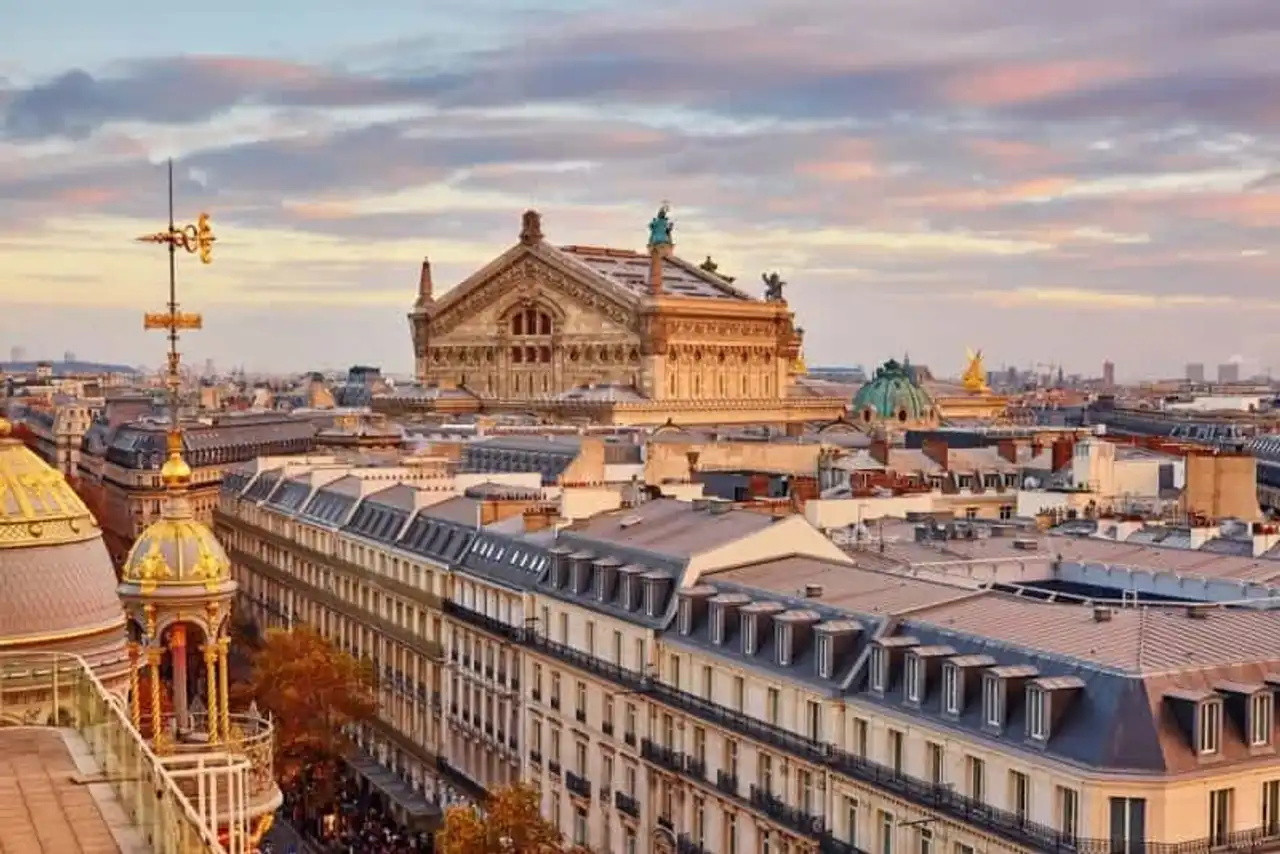
Photo credit: De Ekaterina Pokrovsky / Shutterstock.com
Like the stories that marked the French culture, Opéra Garnier begins well before its birth. In 1793, a first theatre hall built by the comedian and troop director Monsantier opens its doors in front of the National Library. With a capacity of 1600 places, the venue is designed to highlight the local scene. About a year after the inauguration, Monsantier was accused of having wanted to fire the National Library, theatre management was then entrusted to the Opera. If the shows are maintained so far, the future of the Monsantier theatre takes a different turning point when a Duke was murdered at the end of a performance in 1820: a gesture that pushes Louis XVIII to order the demolition of the theatre.
Touched by this symbolic act for culture, the architect François Debret then takes over a reconstruction project: in just a few months, Opera Peletier sees the day. Inaugurated in 1821, he was considered a temporary venue in the expectation of a new Opera which could host the stage with a lyrical and choreographic vocation permanently. In 1858, an attack against Napoleon III was carried out at the Opera, which led the emperor to relocate the latter in order to build a safer place for the national bourgeoisie.
It was therefore two years later, in 1860, that the project of the “ Imperial Academy of Music and Dance is launched. To do this, Napoleon III begins by soliciting architects with a great competition: a total of 171 candidates meet the offer! Among them, stitches like Eugène Viollet-le-Duc or George Eugène Haussmann try their luck. In the end and to the general surprise, Charles Garnier , a young 35-year-old architect, is chosen by the jury who unanimously entrusts him with the management of the project. The construction site was launched and the work began and the first stone was laid on 21 July 1862 by Count Walewski.
In all and for all, the work of the Opera will take several long years: during the Franco-German war, it will be stopped to resume only at the end of the conflict during the fall of the Second Empire. However, the work goes back under the Twelfth Republic even if the project fails to see the day... And because of this, the cost of construction is more important than that granted at the beginning under Napoleon III, however the funds necessary for the completion of the work are in the meantime granted to other construction projects such as the Hôtel-Dieu. Until the day that, on the night of October 28-29, 1873, Operation Peletier was ravaged by a fire: a tragic event or rather an evil for a good for our architect who has six million nine hundred thousand francs is granted to complete the construction of the new Opera as soon as possible.
On 5 January 1875 the Opéra Garnier was finally inaugurated in large pumps and in the presence of the President of the Republic Patrice de Mac-Mahon . As a symbol of the Paris of the Second Empire, the Opéra Garnier then became the symbol of luxury and became the one we know today: a high place of French culture.
What to see and do at the Opéra Garnier in Paris?
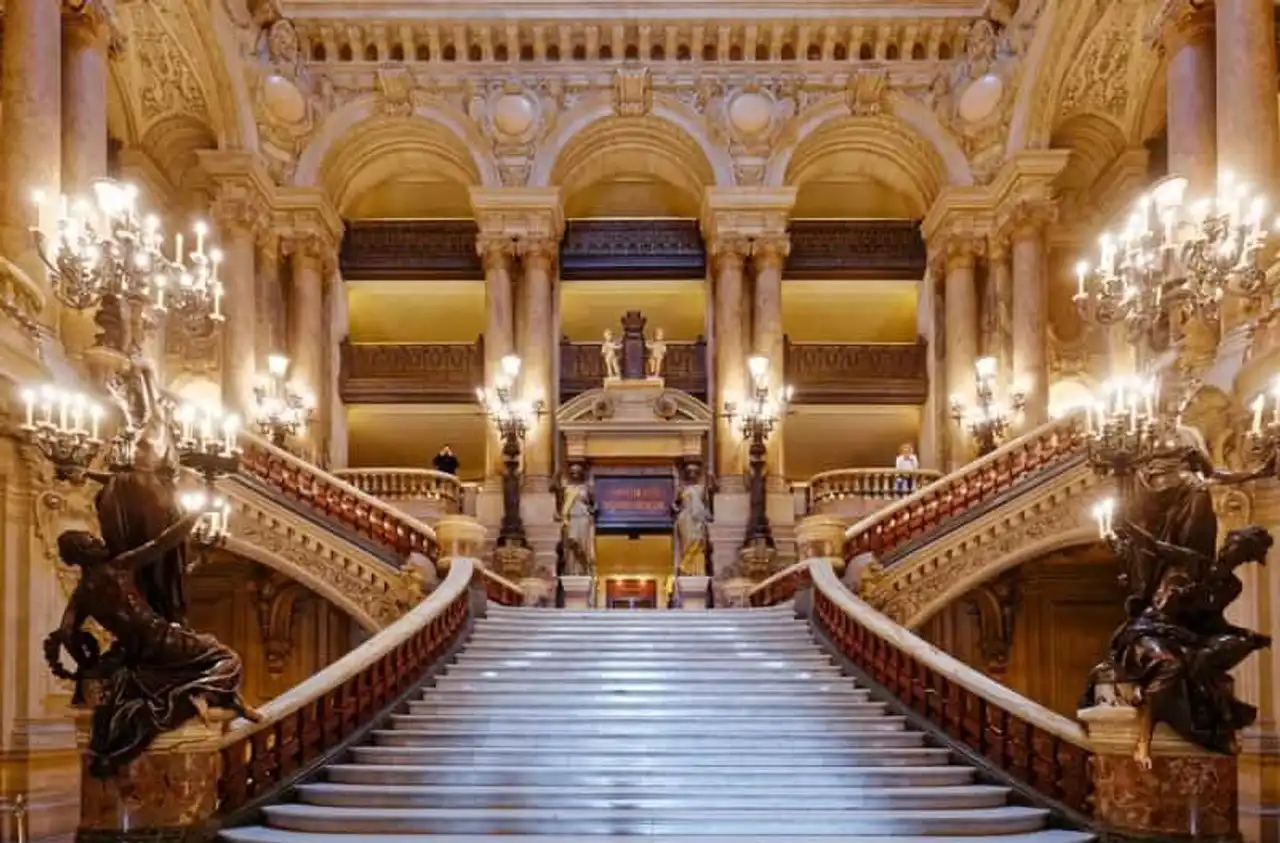
Photo credit: De Isogood_patrick / Shutterstock.com
The exterior
If the Opéra Garnier houses many treasures between its walls, it is good to remember that its exterior also deserves a look! Architectural masterpiece, the façade of the monument Give her the tone of the visit alone. From " Harmony to “ Poetry Carved both by Gumery, passing through the busts of Rossini, Mozart or Beethoven carved by Evrard and Chabaud, each detail in the column near translated a master's work. One advice: take the time to observe the walls that dress the Opera.
The Pythia
Welcome figure of the monument, “ Pythia » (Duchesse de Castiglione-Colonna) is a statue made by Adèle d’Affry ( Marcello ) and which was chosen by Garnier in 1870. Installed under the great Academie, it represents the patronage of the artists and symbolizes the one that shows the way.
The Grand Slope
After crossing the Pythian basin, head to the Pythian Grand Escalier . At its feet, the women’s allegories holding bouquets of light welcome visitors, while the balconies and the superb marble nave overlook up to 30 meters higher the great steps of the double revolution staircase. Even higher, the sumptuous ceiling calls for dreaming with its signed works Isidore Pils such as “ The charm of music and “ The triumph of Appollon » offer a real show. An emblematic social place, it allowed the time to observe newcomers from the balconies.
La salle de spectacle
Made in the tradition of Italian theatres, the show room was designed so that all spectators can see the stage as the hall. In other words, the seats were arranged in such a way as to see and be seen. In addition to its design, the show room also houses some wonders. Son ceiling , majestic canvas of 220m2 painted by Chagall, tribute to fourteen choreographers and composers, is also the most remarkable of them. For its part, the bronze and crystal chandelier with 340 lights (whose size is equivalent to a two-storey house) is the most majestic yet, like the stage curtain. Turn around and everywhere else, the gilding, the velvet and the marble come to enhance the beauty of the room.
The Great Foyer
Inspired by the "Glass Gallery", the Grand Foyer tends to turn heads! And for cause, every sculpture, painting, gilding, mirror and window symbolizes the place as much as it magnifies it. For the anecdote, it allowed spectators to be able to meet during the entractment, a place of exchange in sum, first reserved for men (women they remained in the lodges).
The Library-Musée
On two levels, the Library-Musée de l’Opéra presents permanent collections of paintings, drawings, photographs and decorations on nearly three centuries of theatre. The second-level reading room is reserved for researchers.
La Galerie de l’Orchestre
Among the last must-sees of the monument, the Galerie de l’Orchestre offers another look at the Opera with an audiovisual documentary retracing its history.
Secret places
If not all are accessible to the general public, the Garnier Opera houses other more secret places. For example, the backstages formerly reserved for subscribers only during the intract or the famous “lake of the Opera” which is in fact an underground basin located under the great scene where firefighters and fennel men train.
How do I go to the Opéra Garnier in Paris?
- On foot : Angle streets Scribe and Auber, 75009 Paris
- By metro : Opera station, lines 3, 7, 8
- RER : Auber station, line A
- By bus lines 20, 21, 22, 27, 29, 42,52, 53, 66, 68, 81, 95
- By car : Q-Park Edouard VII – Rue Bruno Coquatrix 75009 Paris (face to 23 Rue de Caumartin)
Schedules and rates of the Opéra Garnier
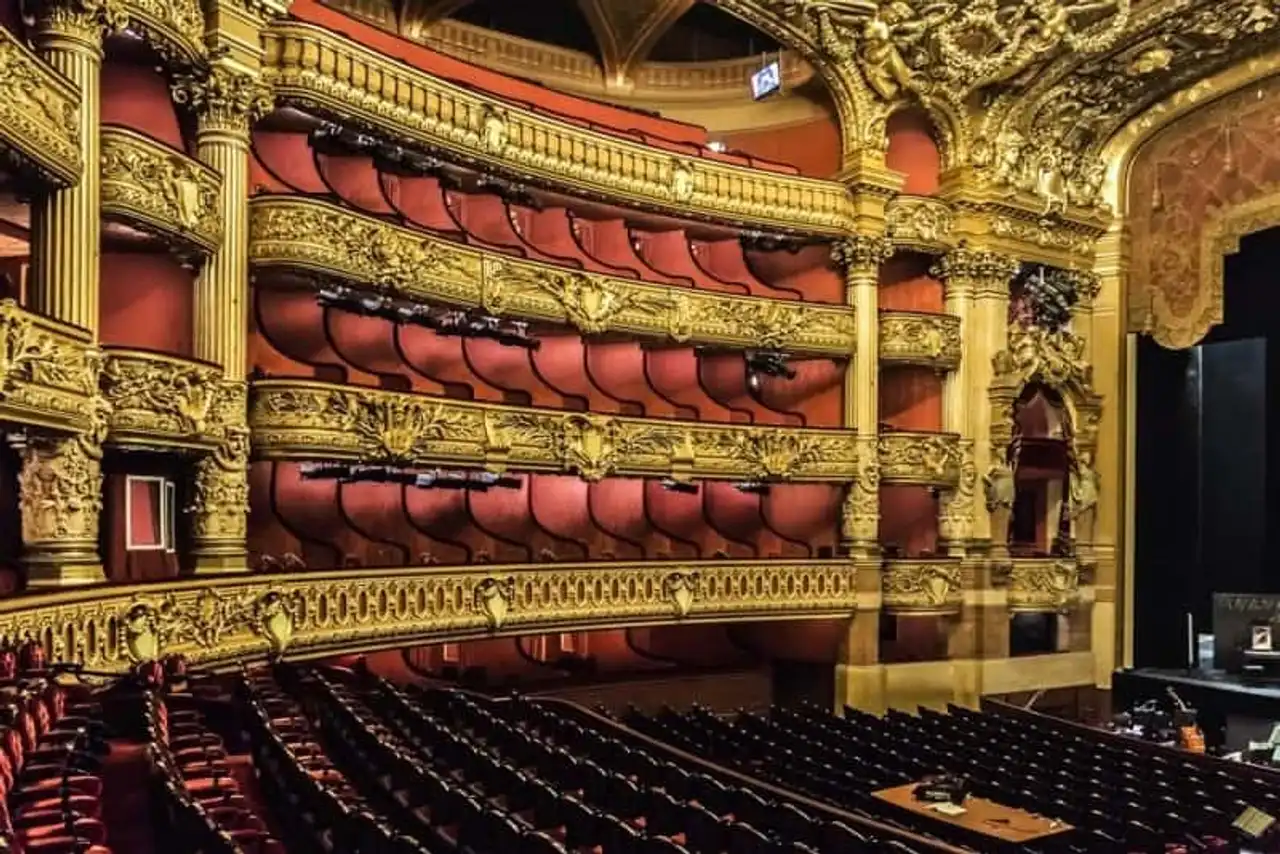
Photo credit: From Kiev.Victor / Shutterstock.com
HORARI
Opera Garnier is open daily from 10 a.m. to 4.30 p.m. closed on 1 January and 1 May.
- Guided tours Wednesday, Saturday and Sunday at 11.30 a.m. and 3.30 p.m.
- In July and August, an additional 14-hour visit is proposed
- Attention to exceptional closures at 1 p.m. (variables to year)
RATES
- Adult : 12€ (excluding exposure period)
- Youth 12-25 years : 10€
- Free for children under 12 years of age, persons with disabilities accompanied and unemployed
- Audioguide : +5€
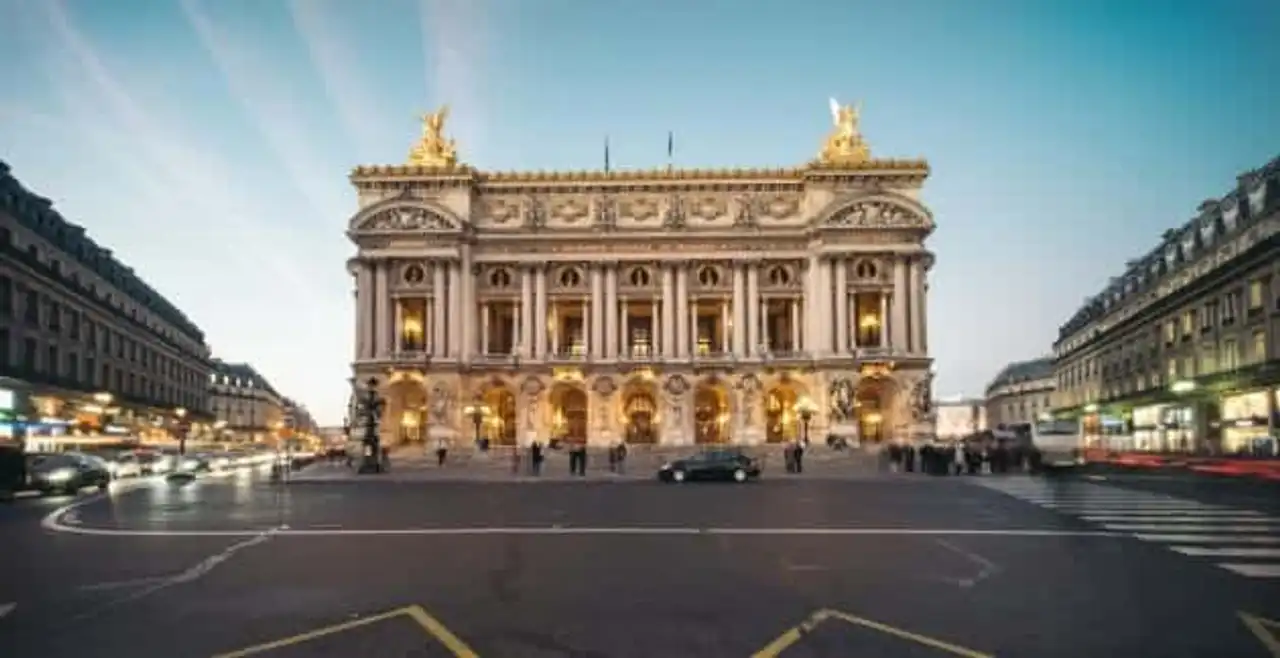




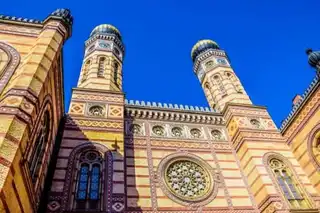


Loading comments ...